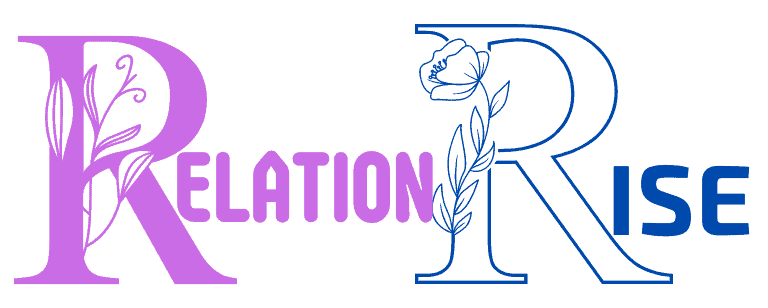What Does Synergistic Relationship Mean
A synergistic relationship means when two or more elements work together to enhance each other’s effectiveness. This mutually beneficial alliance results in a combined effort that produces greater outcomes than if the elements were working independently.
In today’s interconnected world, understanding the concept of synergistic relationships can be crucial for businesses and individuals alike. This dynamic interaction between different entities can lead to increased productivity, efficiency, and overall success. Whether it’s partnerships between companies, collaborations among team members, or the interconnectedness of various factors in a system, recognizing and nurturing these synergistic relationships can lead to substantial advantages.
By leveraging the strengths of each component within a synergistic relationship, the whole becomes greater than the sum of its parts. This comprehensive approach not only fosters development and growth but also creates a supportive environment that fosters innovation and progress. As the dynamics of modern society continue to evolve, the significance of synergistic relationships cannot be overstated. Whether in business, personal relationships, or any other aspect of life, understanding and harnessing the power of synergy can lead to remarkable achievements.
Understanding Synergistic Relationships
A synergistic relationship refers to a dynamic and mutually beneficial connection between entities, where the combined effect of their interaction is greater than the sum of their individual effects. In understanding synergistic relationships, it’s essential to recognize the powerful impact they can have on personal, professional, and social aspects of life.
Synergy In Relationships
Synergy in relationships occurs when two or more individuals collaborate and bring together their unique strengths, skills, and perspectives to achieve a shared goal or outcome. It involves harnessing the collective power of the involved parties to create results that surpass what each could achieve alone.
Significance Of Synergistic Relationships
The significance of synergistic relationships lies in their ability to foster innovation, enhance productivity, and promote harmonious interactions. These relationships lay the foundation for effective teamwork, open communication, and the development of creative solutions to complex problems.
Key Elements Of Synergistic Relationships
- Trust: Building and maintaining trust forms the cornerstone of synergistic relationships, enabling participants to rely on each other and collaborate with confidence.
- Open Communication: Facilitating transparent and honest communication fosters understanding and alignment, essential for leveraging the diverse strengths within the relationship.
- Mutual Respect: Valuing the perspectives, contributions, and boundaries of all involved parties cultivates an environment where everyone feels appreciated and empowered.
- Shared Goals: Identifying common objectives and working towards them collectively ensures that the efforts of each party are directed towards a unified purpose.
Definition Of Synergistic Relationship
A synergistic relationship refers to a mutually beneficial connection between two or more entities in which the combined effect is greater than the sum of their individual efforts. It is a cooperative and interdependent association that yields enhanced results through combined action, cooperation, and collaboration.
Mutual Benefit And Cooperation
A synergistic relationship thrives on the principle of mutual benefit and cooperation. Partners within such partnerships work together towards a common goal, leveraging each other’s strengths and resources to achieve shared objectives. This entails a reciprocal exchange of support, ideas, and expertise, creating a cohesive and symbiotic alliance.
Ensuring Each Heading Adheres To Html Syntax
Within a synergistic relationship, entities prioritize open communication, transparency, and reciprocity to foster a harmonious and effective collaboration. The emphasis on shared benefits and collective success encourages the development of a robust, symbiotic partnership that propels both parties towards their goals.
Types Of Synergistic Relationships
Types of Synergistic Relationships refer to the various collaborative connections that exist between individuals, organizations, or entities where the combined efforts produce a result greater than the sum of their individual efforts. These relationships are crucial in creating value, enhancing innovation, and driving growth across different domains. Let’s explore some key types of synergistic relationships:
Business Partnerships
Business partnerships are collaborative relationships between two or more entities aimed at achieving a common goal, leveraging complementary strengths, and sharing resources. These partnerships can take various forms, including joint ventures, strategic alliances, or supplier-customer relationships. They allow organizations to capitalize on each other’s expertise, expand their market reach, and achieve mutually beneficial outcomes.
Team Collaboration
Team collaboration refers to the synergy generated when individuals with diverse skills, knowledge, and perspectives work together towards a shared objective. This type of synergistic relationship is commonly observed in project teams, cross-functional teams, or virtual teams. Effective collaboration fosters creativity, problem-solving, and productivity, leading to the achievement of collective goals and delivery of innovative solutions.
Factors Affecting Synergistic Relationships
Synergistic relationships refer to a collaboration where the combined efforts of two or more entities produce a greater outcome than if they were working independently. Factors affecting these relationships include clear communication, mutual respect, aligned goals, and complementary skill sets, which are essential for success.
Factors Affecting Synergistic Relationships Synergistic relationships are built upon a foundation of effective communication, trust, and respect among individuals or entities. These factors play a pivotal role in shaping the nature and strength of the collaborative bond. Understanding the nuances of these factors is essential for fostering productive and harmonious synergistic relationships.Effective Communication
Effective communication forms the cornerstone of a successful synergistic relationship. Clear and concise communication ensures that all parties involved are aligned with shared objectives and expectations. It promotes transparency and minimizes misunderstandings, thus nurturing a positive environment for collaboration. Whether it’s verbal, written, or non-verbal communication, the ability to express thoughts, ideas, and concerns openly is fundamental for maintaining synergy.Trust And Respect
Trust and respect are fundamental elements that underpin the fabric of synergistic relationships. Mutual trust establishes a sense of reliability and dependability, fostering an environment where individuals feel secure in expressing their opinions and taking calculated risks. Respect, on the other hand, cultivates a positive atmosphere where diverse perspectives are valued and appreciated. When trust and respect are mutually upheld, it lays the groundwork for a collaborative synergy where collective success takes precedence over individual gains. In summary, effective communication, trust, and respect are pivotal components that shape the dynamics of synergistic relationships. By prioritizing these factors, individuals and organizations can fortify their collaborative bonds, leading to enhanced productivity, creativity, and overall success.Achieving Synergistic Relationships
The concept of synergistic relationships revolves around the idea of creating connections that are truly greater than the sum of their parts. In a synergistic relationship, two or more entities collaborate in a way that amplifies each other’s strengths, produces exceptional results, and fosters mutual growth. Achieving such relationships requires deliberate effort, communication, and collaboration to create a harmonious environment that maximizes the potential of the individuals or entities involved. Below, we’ll delve into the key aspects of achieving synergistic relationships.
Building Strong Connections
Establishing strong connections forms the foundation of a synergistic relationship. Emphasizing open and honest communication, actively listening to each other’s perspectives, and fostering trust are crucial in building strong connections. Investing time and effort into truly understanding the needs, goals, and challenges of the parties involved lays the groundwork for a mutually beneficial relationship.
Nurturing Mutual Growth
Nurturing mutual growth involves a commitment to supporting each other’s development and success. This includes sharing knowledge, resources, and expertise to facilitate the growth of all parties involved. In a synergistic relationship, the focus is not only on individual advancement but also on collectively empowering each other to reach new heights.
Frequently Asked Questions Of What Does Synergistic Relationship Mean
What Is A Synergistic Relationship?
A synergistic relationship is when two or more elements work together to produce a combined effect greater than the sum of their separate effects.
How Can A Synergistic Relationship Benefit Businesses?
A synergistic relationship can benefit businesses by combining resources and skills to achieve mutual goals, leading to increased productivity and profitability.
What Are Some Examples Of Synergistic Relationships In Nature?
Examples of synergistic relationships in nature include mutualism, where two species benefit from each other, and symbiosis, where two different organisms live together for mutual benefit.
How Can Individuals Cultivate A Synergistic Relationship In Their Personal Lives?
Individuals can cultivate a synergistic relationship in their personal lives by fostering open communication, mutual respect, and a shared vision for common goals and aspirations.
Is A Synergistic Relationship Important In The Workplace?
Yes, a synergistic relationship in the workplace is crucial for fostering collaboration, innovation, and a positive work environment, leading to increased efficiency and success.
Conclusion
Understanding the concept of synergistic relationship provides valuable insights into the interconnectedness of elements. This symbiotic interaction fosters mutual benefit, leading to amplified results. Embracing such relationships can positively impact various aspects of life and business. With awareness and effort, nurturing synergistic relationships can generate unparalleled success and growth.



